-
December 23, 2019 by Total Fire and Safety

We wish you the warmth and cheer of the season!
Thank you for your continued support throughout the year.
From all of us at Total Fire & Safety
Twelve Days of Fire Safety
On the first day of safety, Total Fire gave to me…
A safe and code compliant facility!
On the second day of safety, Total Fire gave to me…
Two emergency plans
and a safe and code compliant facility!
On the third day of safety, Total Fire gave to me…
Three eyewash stations
Two emergency plans
and a safe and code compliant facility!
On the fourth day of safety, Total Fire gave to me..
Four first aid kits
Three eyewash stations
Two emergency plans
and a safe and code compliant facility!
On the fifth day of safety, Total Fire gave to me…
FIVE WIRELESS ALARMS
Four first aid kits
Three eyewash stations
Two emergency plans
and a safe and code compliant facility!
On the sixth day of safety, Total Fire gave to me…
Six extinguishers inspected
FIVE WIRELESS ALARMS
Four first aid kits
Three eyewash stations
Two emergency plans
and a safe and code compliant facility!
On the seventh day of safety, Total Fire gave to me…
Seven exit signs Six extinguishers inspected
FIVE WIRELESS ALARMS
Four first aid kits
Three eyewash stations
Two emergency plans
and a safe and code compliant facility!
On the eight day of safety, Total Fire gave to me…
Eight backflow inspections
Seven exit signs
Six extinguishers inspected
FIVE WIRELESS ALARMS
Four first aid kits
Three eyewash stations
Two emergency plans
and a safe and code compliant facility!
On the ninth day of safety, Total Fire gave to me…
Nine sprinkler systems
Eight backflow inspections
Seven exit signs
Six extinguishers inspected
FIVE WIRELESS ALARMS
Four first aid kits
Three eyewash stations
Two emergency plans
and a safe and code compliant facility!
On the tenth day of safety, Total Fire gave to me…
Ten safety trainings
Nine sprinkler systems
Eight backflow inspections
Seven exit signs
Six extinguishers inspected
FIVE WIRELESS ALARMS
Four first aid kits
Three eyewash stations
Two emergency plans
and a safe and code compliant facility!
On the eleventh day of safety, Total Fire gave to me…
Eleven fire pumps serviced
Ten safety trainings
Nine sprinkler systems
Eight backflow inspections
Seven exit signs
Six extinguishers inspected
FIVE WIRELESS ALARMS
Four first aid kits
Three eyewash stations
Two emergency plans
and a safe and code compliant facility!
On the twelfth day of safety, Total Fire gave to me…
Twelve new extinguishers
Eleven fire pumps serviced
Ten safety trainings
Nine sprinkler systems
Eight backflow inspections
Seven exit signs
Six extinguishers inspected
FIVE WIRELESS ALARMS
Four first aid kits
Three eyewash stations
Two emergency plans
and a safe and code compliant facility!
Category: Fire Alarm Monitoring, Fire Equipment Inspections, Fire exits, Fire Extinguishers, Fire News, Fire Safety, Sprinkler Systems, Total Fire and Safety, Uncategorized Tags: commercial fire safety, fire and safety equipment, fire and safety solutions, Fire Extinguisher, fire safety, Total Fire & Safety, wireless fire alarms | Comments Off on Happy Holidays from Total Fire & Safety
-
July 23, 2019 by Total Fire and Safety
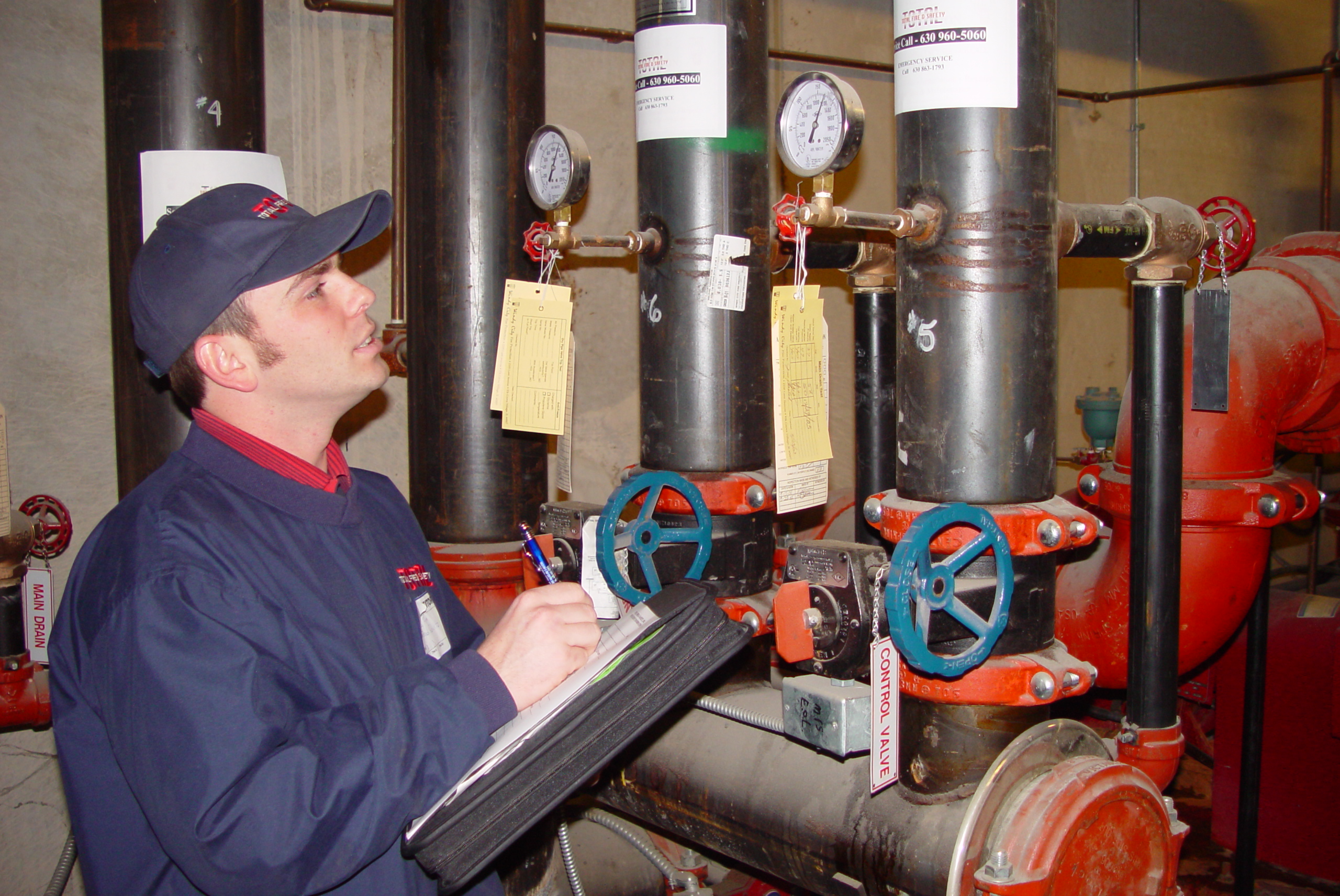
When people think of careers in fire safety in Illinois, they usually think of firefighters. But what about the folks who prevent the fires in the first place? These dedicated professionals work in the area of commercial fire safety. They help commercial buildings and residential dwellings stay up to code with the fire safety equipment, and thus, can save lives indirectly by keeping people safe and prepared for fire emergencies.
Providing fire safety to any business, at any level, starts with teamwork. If one aspect of fire safety fails (sprinkler, extinguisher, or alarm), it can make the difference between life and death. All the fire safety components work within a life safety ecosystem, which includes government code compliance, a skilled workforce, and an investment in safety equipment, installation, and training. As part of a commercial fire safety team such as Total Fire and Safety, you are part of a life-saving mission. We provide customers their first offense in putting out a fire on their premises.
According to the Bureau of Labor Statistics and their Occupational Outlook Handbook, the projected employment change for security and fire alarm system installers is expected to grow 14 percent, which is faster than the average career. They are expecting growth of 10,400 new jobs between 2016-2020. Currently, Illinois, the home state of Total Fire & Safety, is among the states in the nation that employs the most installers in this field. (see chart below).
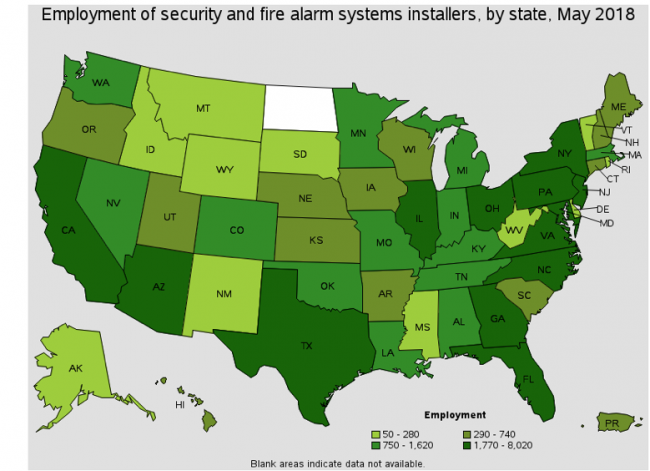 Chart reprinted from Bureau of Labor Statistics, Occupational Employment and Wages, May 2018, 49-2098 Security and Fire Alarm Systems Installers
Many of the careers in fire safety require a high school diploma or equivalent but mainly, on-the-job training. At Total Fire & Safety, we have a vigorous employee training program that prepares our people for many of the jobs that are so needed in the industry, such as customer service, sales representatives, dispatchers, fire alarm service technicians, fire extinguisher technicians, fire sprinkler service technicians, etc. We even have an on-site training facility (pictured below) where we regularly host classes and training modules for TFS employees.
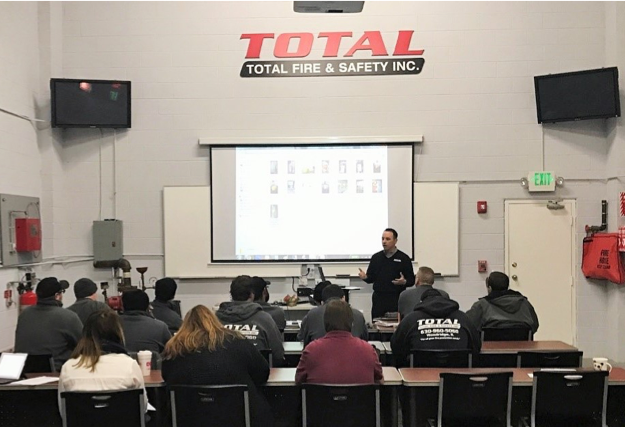
You’ve heard the phrase teamwork makes the dream work, right? At Total Fire and Safety we are always looking for dedicated professionals to join our commercial fire safety team, which has that has provided fire safety for over 30 years. If you are looking for employment or are ready for a career change, join Total Fire and Safety and see how working as a team can save lives.
To learn more about the opportunities available and experience needed at Total Fire and Safety, visit our employment page or search us on Indeed.
Category: Business Safety, Fire Safety, Total Fire and Safety Tags: commercial fire protection, commercial fire safety, employee training, fire and safety equipment, fire safety, fire safety training, Fireextinguishertraining, firesafetytraining, Total Fire and Safety, training | Comments Off on Find Your Career in Illinois Commercial Fire Safety
-
May 20, 2019 by Total Fire and Safety

(Photo credit: Dreamstime ID 95654936 © Wavebreakmedia Ltd | Dreamstime.com)
With the rise in popularity and construction of senior living centers, fire safety continues to be a concern to keep our grandparents, parents, and aging loved ones protected. According to the United States Fire Administration, in 2015, older adults represented 15 percent of the U.S. population and suffered 40 percent of all fire related deaths. They are also 2.7 times greater risk of dying in a fire than the total population. Those 85 and older were 3.8 times more likely to die in a fire than the total population.
The elderly in multi-level dwellings are at higher risk of dying in a fire for several reasons. They may be on medication that impairs them from taking stairs down to safety, or their mobility issues may prevent them from moving quickly enough. They may live alone or have no one to call for assistance. Educating property managers, caretakers, and the elderly on fire safety for senior citizens is one step we can take in protecting this aging generation. Below are some considerations for property managers and their tenants.
1. Test Smoke Alarms
Smoke is a silent killer. Senior citizens with hearing problems who sleep without a hearing aid could be killed in their sleep. Having a working smoke alarm in every room and hallway helps, but they should be effective for the user. Strobe alarms are best, and seniors can install alarms that shake their bed to rouse them in the event of a fire. Most importantly of all, make sure to test smoke alarms every month so they are always in compliance.
2. Sit Your Butt Down…in the proper place!
Smoking is the number one cause of fire deaths in the country. Remind senior citizens never to smoke in bed and especially not near flammable oxygen tanks. Seniors can use deeper or heavier ashtrays to avoid ashes flipping or falling onto the rug and starting a fire. The best way to put butts out is with sand and water.
3. Create a Fire Escape Plan
Seniors may have less than three minutes to escape danger in the event of a fire. They should have a fire escape plan and practice it, knowing all the accessible exits. For seniors suffering from dementia or Alzheimer’s who have escape proof doors, it is important they have a prearranged escort in the event of a fire.
4. Stay in the Kitchen
Seniors should always stay in the kitchen when cooking. Most kitchen fires begin because food is left unattended, so if they must leave the kitchen while cooking they should turn the burner off. Even a short absence from the kitchen can unexpectedly turn into an extended amount of time away. If seniors must leave the kitchen, they should take a cooking utensil or potholder with them to serve a helpful reminder. Also, remind seniors to never cook with loose or dangling sleeves that can easily ignite and burn a senior, or potentially start a major fire.
5. Daily Necessities
Seniors should think about what they use to get around every day, like glasses, a wheelchair, a cane, etc. These items should be placed next to the bed for easy access in case of fire. A phone and a whistle should also be at bedside. The whistle lets people know where you are and enables you to warn others of the fire. Escape is always the priority; call the fire department later. If trapped, use the phone to call for help. Seniors with wheelchairs or walkers should check exit routes ahead of time to be sure they are accessible or plan an alternate route. Inform building managers or neighbors of the plan. If your impairment makes it impossible to escape in the event of a fire, discuss your concern with landlord, or check with the fire department.
6. Don’t Overload Outlets or Extension Cords
Inspect your extension cords regularly for fraying, exposed wire, or loose plugs. Unplug extension cords when not in use. If you need to plug in multiple appliances, use an extension cord approved by the Underwriter’s Laboratories (UL), a nationally recognized testing laboratory.
As their population begins to grow, fire safety for senior citizens cannot be stressed enough. Property managers, caretakers, the elderly, and their families should all be aware of the increased risk to the age group and try to protect them. The professionals at Total Fire and Safety are ready to help ensure your building has fire equipment that is working properly. We provide the life safety features that keep fire safety for your residents, including senior citizens, a main priority. Give us a call today! 630-960-5060
Category: Fire Alarm Monitoring, Fire exits, Fire Extinguishers, Fire Safety, Total Fire and Safety, Uncategorized Tags: fire and safety solutions, Fire Extinguisher, fire safety, fire safety solution, fire safety training, fire training, first aid, lifesafety, Total Fire and Safety, wireless fire alarm monitoring | Comments Off on Fire Safety for Senior Citizens
-
March 22, 2019 by Total Fire and Safety
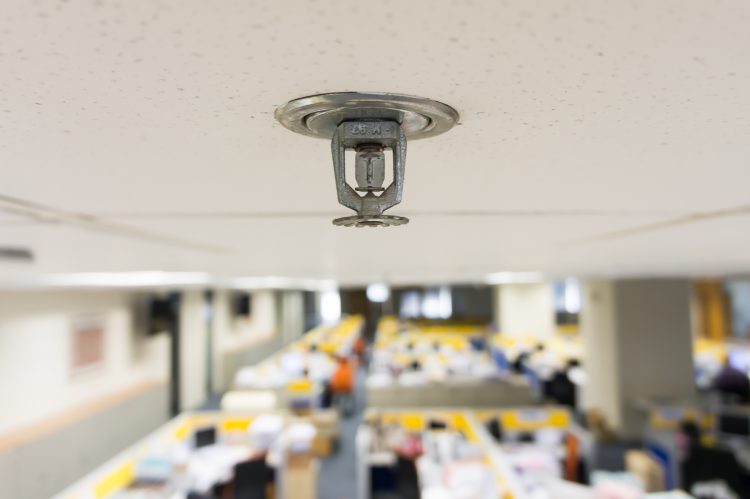
In a commercial building, a fire sprinkler system is one of the most effective ways to control and extinguish fires. A well maintained fire sprinkler system can mean the difference between minor damage and total destruction.
A fire sprinkler system is a group of pipes and sprinkler heads located on ceilings or overhead. They slow the spread of fire or extinguish fire by releasing a spray of water. They are designed to cover as much area as possible to provide widespread coverage.
Most fire sprinklers are heat activated. When heat is detected, water is released and the fire alarm will likely be activated. Obviously, we need fire sprinklers to be as reliable as possible. So when and why do they fail?
The NFPA reports that there are an average of 660 reported sprinkler failures a year. However, with a proper working fire sprinkler 96% of the time they are effective in controlling most fires. The most common causes of sprinkler failures are:
- System shut-off
- Manual intervention
- Damaged components of fire sprinklers
- Lack of maintenance
- Inappropriate design of the fire sprinkler systems
Fortunately, most of these problems can be alleviated with proper, regular inspection of your fire sprinkler system by a trained professional. The NFPA suggests different intervals per year in order to ensure effectiveness.
Monthly inspection should ensure that
- Valves are accessible, labeled properly and are not leaking
- Wet gauges should be in good condition with proper water pressure detected
- Dry gauges should have normal water pressure with the quick opening device showing the same pressure as the dry pipe valve
Quarterly inspection should:
- Check for physical damage to the supervisory alarm and water flow alarm
- Dry test the system to check for valve issues
- Check that all fire department connections are accessible
- Check for leaks around the fire department connections
- Inspect pressure reducing valves (free of leaks, open position, maintaining downstream pressure)
Annual inspection should include all of the above, plus professional inspection by a certified professional for code compliance and tagging.
Well-maintained fire sprinkler systems are paramount to your building safety and occupants. The professional at Total Fire and Safety is dedicated to keeping you safe and in code compliance. Give us a call today to schedule an inspection at 630-960-5060.
Category: Business Safety, Fire Safety, Sprinkler Systems, Total Fire and Safety Tags: commercial fire safety, commercialfiresprinkler, fire safety, Firesprinkler, firesprinklerinspections, sprinkler, sprinklerinspections | Comments Off on Will your fire sprinkler system work when the heat is on?
-
January 23, 2019 by Total Fire and Safety

Commercial first aid kits don’t have to be costly. Yet, when you start to compare commercial first aid providers, you will see some radical differences in pricing. Many first aid service companies find creative ways to drive up costs for their customers. At Total Fire & Safety, our customers never have to worry about “hidden costs” because there are none! Knowing what your company needs and being sure you are not paying for more can help your overall first aid budget and ensure you have the right first aid provider on your side. Here are some tips on hidden fees so you can avoid any surprise charges from your first aid service company.
- Make sure you know what is going in the box.
It is possible that you don’t need many of the supplies the service stocks in your cabinet. Depending on your workplace, employees can experience minor cuts etc. However, overstuffing a kit with odd size bandages and unnecessary items like hand lotion, lip ointment, dental cream, etc. helps a company justify a higher invoice. At Total Fire and Safety we stock what is required by OSHA and what is directed by the client. No redundant or unnecessary items.
- Make sure you are not getting charged extra for “normal” items.
Some companies charge extra for special items, like disinfectant wipes. Check your invoices! There are no surprises with TFS.
- Make sure you are not getting charged for additional representatives.
Some first aid companies have separate reps for stations, for example, first aid kits and eyewash stations. At TFS, your single representative is knowledgeable about all your first aid needs to streamline costs and deliver consistent quality service.
- Make sure the first aid service meets ANSI requirements.
ANSI (American National Standards Institute) puts together the requirements for first aid supplies in the workplace. They provide a specific list for first aid kits. A service company might overlook this list in order to stock a kit with many unnecessary various types of items. At Total Fire and Safety, we provide supplies required by ANSI as well as OSHA.
- Make sure you understand the fees on the invoice.
Do you see service or delivery charges, overstocking or restocking fees? First aid service companies pile these costs into an unreadable invoice. TFS does not charge service fees, fuel, or delivery charges. We only charge for items that employees have used. Have a question about the bill? TFS is there to answer any concerns.
There are many services companies in business to make a buck at the expense and well-being of your company. You should not have to choose between a safe work environment and a cheaper bill. TFS recognizes the importance of a healthy workplace combined with the affordability of superior service. TFS never overcharges, overstuffs, or places hidden fees with in a first aid kit. We provide the right supplies to keep employees safe at work while always keeping costs down. For more than 30 years, Total Fire and Safety has been providing OSHA approved first aid kits and replenishment to businesses. If we can help with your first aid needs, contact us today at 630-960-5060.
Category: Business Safety, First Aid, First Aid Kits, Total Fire and Safety Tags: fire and safety needs, fire safety, first aid, first aid supplies, Total Fire & Safety | Comments Off on Avoiding the Hidden Costs of Commercial First Aid Kits
-
December 4, 2018 by Total Fire and Safety

A brand new year is a great time for businesses to evaluate what they can improve upon, even in terms of their commercial fire safety. No business is completely immune to accidental fires and having the right equipment in place year round can prevent potential devastation.
According to the National Fire Protection Association (NFPA), more than 3,300 fires break out in office buildings across the U.S each year. The NFPA reports that a number of people are killed or injured with an estimated $112 million in property damage.
If you’re a business set on achieving your 2019 goal of reaching NFPA compliance, take a look at checklist of equipment you need below for commercial fire safety. Anything missing? Call Total Fire & Safety. We can help!
____ Alarms
____ Extinguishers and Suppression Systems
- Conduct tests regularly to ensure function and pressure when activated.
- Schedule routine maintenance of equipment.
- Store extinguishers in open areas for easy access.
____ Emergency Lighting
- Effective emergency lighting throughout the building will help occupants to safety in an emergency.
- Schedule regular maintenance and inspections.
Equipment is essential and necessary to prevent major damage but people are too! Whether it’s putting out a fire or tending to the injured, what good is the equipment if you don’t have employees able to use it?
____ First Aid
____ Training Courses
- A comprehensive fire equipment training course on the use of fire equipment and first aid can place confidence in employees and keep everyone safe.
- Training employees reduces the chance of small fires starting and spreading.
You could have all the equipment ready and employees trained to use it but they need something else.
____ Emergency Preparedness Plan
- Remind employees to REACT-(remove from danger, ensure doors/windows are closed, activate alarm, call 911, treat as dangerous.)
- Conduct fire drills.
- Schedule inspections of all fire equipment.
- Have employees trained on firefighting equipment.
Making sure you have commercial fire safety in place can seem a daunting task but the pros at Total Fire and Safety are here to simplify it. TFS covers everything including inspection, maintenance, training, and keeping your building up to code so you are well protected in the event of an unforeseen fire. Give us a call today at 630-960-5060.
Category: Business Safety, Fire Alarm Monitoring, Fire Equipment Inspections, Fire exits, Fire Extinguishers Tags: commercial fire protection, commercial fire safety, commercial first aid kit, emergency exit lights, emergency lighting, fire and safety solutions, Fire Extinguisher, fire safety, fire safety training, fireextinguisher, firesafetytraining, firesprinklerinspections, first aid | Comments Off on The Business Owner’s Checklist for Commercial Fire Safety in 2019
-
November 5, 2018 by Total Fire and Safety

Next to the everyday hustle and bustle of the average office, office kitchen fire safety is a secondary concern. However, the National Fire Protection Agency (NFPA) reports that just over one-fifth of office fires begin in the kitchen or cooking area. Twenty-nine percent are started by cooking equipment, the leading cause of fires in the office. Although these fires started small, they caused major structure damage.
With the holidays on the way and more employee parties sure to take place, the office kitchen will be used more than ever. How can you prevent a fire from happening? How do you keep your employees safe and well fed at the same time? Here are four important safety tips to help you get started:
1. Replace worn or frayed power cords.
Inspect power cords on the kitchen appliances. Are the wires exposed? If so, the cord can short out and cause a fire. Encourage your employees to keep an eye out for damaged cords. Be sure to replace them as soon as they are found. This one simple act will keep the office safe.
2. Watch food as it cooks.
It easy to become distracted in the office, whether its fellow coworkers gossiping or doing too many things at once. You wouldn’t leave food unattended at home and the office should not be any different. To ensure food cooks properly, emphasize that employees must stay near appliances as they cook or heat food/beverage. Employees using the kitchen also need to watch for signs of smoke or burning. Doing so will ensure the safety of the entire building.
3. Regularly clean appliances.
We’ve all been there. We stick a (insert food item) in the microwave, oven, toaster, etc., and it explodes or leaves spillage behind. However, we avoid cleaning, commonly thinking someone else will do it. Spills and baked-in foods left behind can cause a fire. Cleaning kitchen equipment after use will prevent grease from accumulating which prevents combustion. These hazards can be avoided easily so remind employees to wipe up spills, food particles left behind, etc.
4. Have employees trained to use a fire extinguisher.
No matter how proactive you and your employees are, accidents still happen. Having staff trained to use fire fighting equipment could mean the difference between a catastrophe or a minor incident. Total Fire and Safety can train you and your employees to use a fire extinguisher, first aid equipment, and other lifesaving safety measures.
With most office fires starting in the kitchen, it is important to educate employees on office kitchen fire safety. Total Fire and Safety (TFS) offers a complete fire training program to educate employees on the proper techniques of fighting a fire. Not only can your employees use these practices in the office, they can also apply them in their home. Keep you, your staff, and your workplace fire safe. Give TFS a call today at 630-960-5060.
Category: Business Safety, Fire Extinguishers, Fire Safety, First Aid, First Aid Kits Tags: commercial fire safety, fire and safety equipment, fire and safety needs, fire and safety solutions, Fire Extinguisher, fire safety, fire safety solution, fireextinguisher, firesafetytraining, first aid | Comments Off on Danger on the Job: Keeping the Office Kitchen Safe
-
September 19, 2018 by Total Fire and Safety
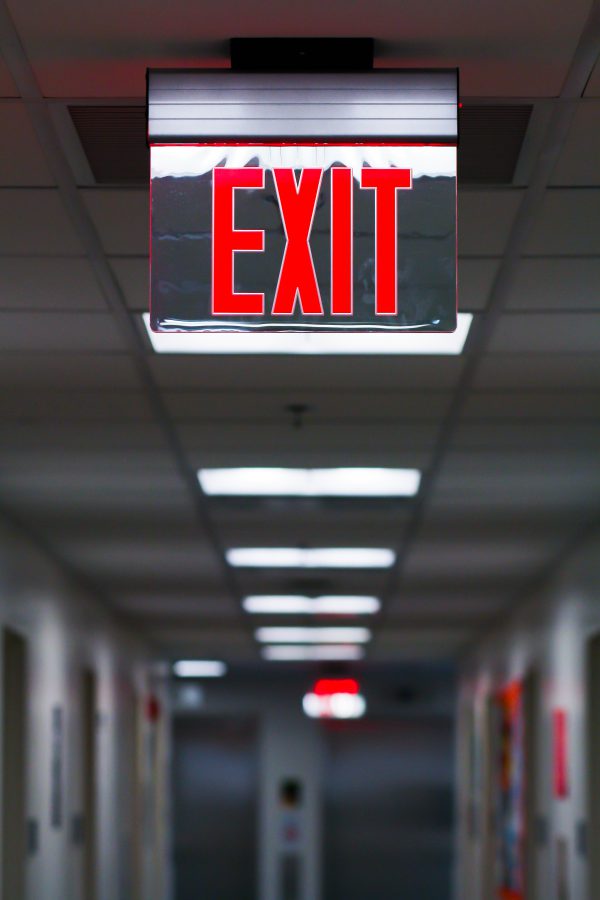
Campus fire safety is not likely a hot button issue with college students or parents when they first move on campus. But fires occur on college campuses more than parents and students realize. According to The Center for Campus Fire Safety, between 2000-2018, more than 92 fatal fires killed 132 people on college campuses, Greek housing, or off-campus housing within three miles of college housing. The NFPA reports that U.S. fire departments responded to an average of 3,870 fires in dormitories and Greek housing from 2009 to 2013. Cooking equipment accounts for 86 percent of the fires.
Most dormitories have specific rules and regulations in place to reduce the possibility of fire, but sometimes drugs and alcohol consumption can inhibit a student’s ability to recognize danger zones. It’s worth mentioning to your child that special care must be taken with the following items, even when they allowed by residence:
- Space heaters
- Candles
- Stovetops
- Cooking utensils
- Smoking
- Overloaded power strips
When you move your child in, you can help keep them safe by keeping fire safety in mind:
- Check for smoke alarms and fire sprinklers. These should be located in hallways, lobbies, bathrooms, bedrooms, etc.
- Look for a posted escape route. If there are no plans posted, make one.
- Check with school officials when and how often fire drills are planned. There should be fire drills on-campus, in Greek housing and off-campus housing.
- Keep all exits clear for a safe escape path.
- Do not use flame candles, opt for battery operated candles.
- Practice fire safety in the kitchen. Do not leave food cooking unattended and do not cook when tired or in a compromised state. Unplug appliances. Do not put out grease fires with water.
- Do not overload outlets.
- Turn off electronics and appliances, like computers, hair tools, etc. Hit the off button when leaving the room.
- Clean the lint trap from the dryer, before and after each use.
- Smoke outside! Do not dispose of cigarettes, etc. in the garbage.
Unfortunately, one of these potential fire hazards became real when a mother lost her daughter in a fire while she was attending Reed College near Portland, Oregon. Because of this tragedy, the victim’s mother partnered with the Portland Fire and Rescue to promote the “Zero Death Initiative.” The program aims to educate students, who are on their own for the first time, about fire safety.
Starting college is a big step into a new world for everyone but campus fire safety should not be lost in the fray. Take the precautionary measures now so your child can stay focused on the year ahead. Total Fire and Safety keeps residential buildings equipped and compliant with proper fire code regulations. To find out more about what we do, give us a call at 630-960-5060.
Category: Fire exits, Fire Extinguishers, Fire News, Fire Safety, Total Fire and Safety Tags: emergency exit, emergency exit lights, escape route, fire and safety equipment, fire drill, Fire Extinguisher, fire safety, Firesprinkler, safety, smoke alarms | Comments Off on Parent’s Guide to Campus Fire Safety
-
August 23, 2018 by Total Fire and Safety
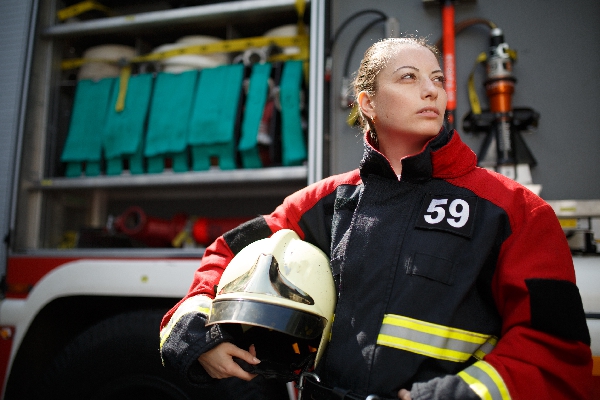
Are there more women firefighters in our future? YES! Groups of Suburban Chicago young women are proving it. This past summer a local Fire Protection District hosted a Girls Firefighter Summer Camp which was enthusiastically attended by many girls who are considering firefighting as a career. The girls learned all aspects of firefighting through hands-on training, like climbing ladders, treating patients, and putting out fires, etc. The goal of the camp was to show girls they can do the job, but they need look no further than the past and the present for their role models and inspiration.
Women Firefighters in History
Women have been firefighters for over 200 years which is an amazing fact in an industry so dominated by males.
- Molly Williams was the first woman firefighter. She was a slave in New York City until she became a member of Oceanus Engine Company #11 in 1815. Although she was as tough as the men, she always wore a calico dress and checkered apron to the fires.
- In 1820, Marina Betts joined the Pittsburgh fire department, a career that lasted 10 years.
- During WWII, two military fire departments in Illinois were staffed entirely by women volunteers.
- Lauren Howard was the first career female firefighter in Chicago. She joined the force in 1980 and was the only woman until 1986.
Women Firefighters Today
According to NFPA (National Fire Protection Association), 252,000 women work in the firefighting industry, but nationwide, only 4% of firefighters are women, a staggering number when compared to the 90% of women nurses and 97.5% of women teachers. In fact, females in farming and construction have a higher percent than female firefighters.
The International Fire Chief’s Association started a council for women fire chiefs in 2017 to network, share ideas and identify strategies to improve their organization. The council of 16 represented approximately 50 female fire chiefs across the country.
Even for the strongest female, the road to firefighting is not easy. Cities like Joliet, Illinois are hiring their first female recruit this year in their long, century old history. Another department in East Point, Georgia recently made headlines by hiring the first ever African-American female fire chief in the United States.
Male and Female Qualities
Let’s face it. When someone’s house is burning, most people don’t care if it’s a man or woman who shows up to help…they just want a good firefighter. And the attributes of a good firefighter are numerous and have nothing to do with gender.
- Honest and dependable
- Learns quickly; can remember and use their training when the pressure is on
- Physically fit; is committed to a healthy lifestyle and to maintaining fitness
- Functions well as part of a team
- Cares about and respects co-workers and members of the community
- Communicates and listens well
- Is dedicated to her/his work
- Has, and uses, common sense
- Is emotionally stable and deals with stress appropriately
- Has a sense of humor
- Is open-minded and flexible, willing to try new things and listen to new ideas
At Total Fire & Safety, we believe our work in inspection, installation and maintenance of fire safety equipment helps keep firefighters safe by helping minimize fire damage and providing what’s needed to fight fires until the force arrives. We salute all fire fighters and especially the brave women of the force who work to keep us safe!
Category: Fire News, Total Fire and Safety Tags: fire safety, fire safety in the news, Total Fire & Safety, Women Firefighters | Comments Off on Are There More Women Firefighters in Our Future?
-
May 30, 2018 by Total Fire and Safety
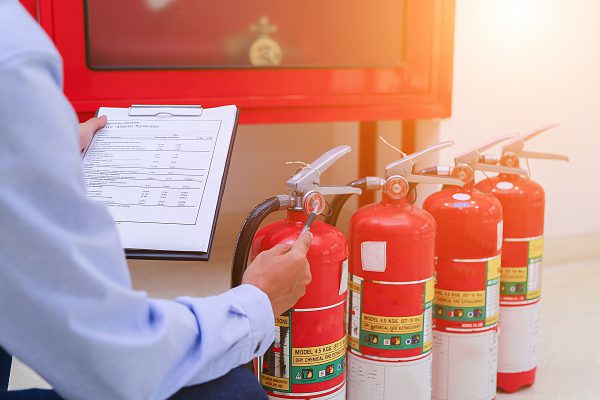
Most companies understand the mandate to have regular fire extinguisher inspections but many wonder why on earth a company could actually fail these inspections. After all, a fire extinguisher is rarely used so how can it need service?
Chances are you see a fire extinguisher every day, but how closely do you look at it? Even one dent in the tank can change the outcome. According to the NFPA, nearly 30 percent of fire extinguishers are not in proper working order. Total Fire and Safety’s twelve-point check can ensure your company’s compliance. However, there are five main reasons why companies fail a fire extinguisher inspection.
1. Unseen Damage– Corrosion or damage can occur over time in hard to see areas of the extinguisher, for example, rust within the tank. That is when a professional steps in and inspects the extinguisher inside and out. TFS will visually examine the extinguisher making sure it is free of dents, rust, or other hazards.
2. Potential Hose Blockage– Debris can clog the hose or deterioration of the O-rings can occur over time, rendering a fire extinguisher useless in an emergency. TFS will remove the hose completely to check for irregularities.
3. Possible Leaks– Whether large or small, a leak will cause the fire extinguisher to be inoperable. Anyone can check the pressure gauge to determine if there is a leak. However, if there is no pressure gauge, you will need a professional. TFS will confirm the compression in the tank.
4. Wear/Fading of Labels– Labels are vital when fighting a fire because they contain instructions on how to use the extinguisher. They also provide important information about the device’s maintenance history, which is needed by inspection professionals. Once your fire extinguisher inspection is complete, the labels will be updated, and an additional certification tag will be attached.
5. Recharging Needed– Once a fire extinguisher is used, even partially, it will need to be recharged immediately. If you fail to recharge the extinguisher, it will fail you in a fire.
Although these are common reasons companies fail fire extinguisher inspections, there are other possible hazards not listed. It is important to stay up-to-date with your fire extinguisher inspections. The NFPA requires inspection every month and maintenance every year by a professional. In addition, a stored pressure extinguisher requires internal maintenance every six years and a hydrostatic test every 12 years.
It takes a minute for a fire to spread and cause irreparable damage to your company—the same amount of time it takes to schedule a fire extinguisher inspection!
Total Fire and Safety can inspect your fire extinguishers to ensure they are unfailingly ready to fight fire at a moment’s notice. We also provide onsite training for your employees, including hands-on practice in the use of a fire extinguisher. Give us a call today at 630.960.5060.
Category: Business Safety, Fire code violation, Fire Equipment Inspections, Fire Extinguishers, Fire Extinguishers, Fire Safety, NFPA Compliance, Total Fire and Safety Tags: equipment, Extinguisher, fire and safety equipment, fire and safety needs, Fire Extinguisher, fire extinguisher inspections, fire safety, safety, Total Fire & Safety, Total Fire and Safety | Comments Off on Why Companies Fail Fire Extinguisher Inspections
|

|
|
|
|
|
|